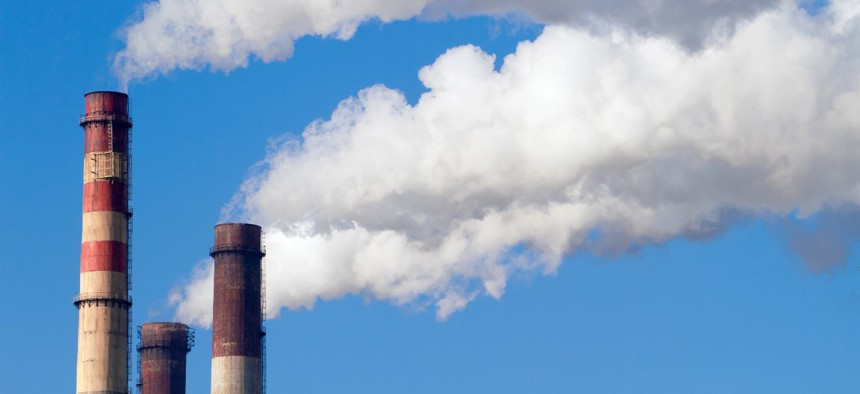
By Mazur Travel / Shutterstock.com
Bipartisan Bill Would Establish Multi-Agency Effort for Carbon Removal
A committee would develop a strategic plan for research and development on carbon dioxide removal in the air, lands and oceans.
A bipartisan group of senators introduced legislation earlier this week that would create a multi-agency initiative for the research and development of carbon removal technologies to make the air cleaner and environment healthier.
Sens. Lisa Murkowski, R-Alaska; Kyrsten Sinema, D-Ariz.; Sheldon Whitehouse, D-R.I.; and Shelley Moore Capito, R-W.Va., introduced the “Carbon Removal, Efficient Agencies, Technology Expertise Act” on Tuesday to bolster carbon reduction efforts. Since the Industrial Revolution –– during the late 1700s to early 1800s –– the concentration of carbon dioxide, a heat-trapping greenhouse gas, in the atmosphere has increased by 45% and is “the principal human-produced driver of climate change,” according to a NASA report last year.
“Carbon removal technologies have significant promise and could someday present an opportunity to substantially reduce net levels of global greenhouse gas emissions,” Murkowski said. “Our bipartisan CREATE Act will help ensure coordinated leadership across federal agencies as we pursue the development of innovative technologies that remove carbon dioxide from the atmosphere and the oceans.”
If enacted, the legislation would establish a carbon management committee within the National Science and Technology Council that would include officials from the White House Office of Science and Technology Policy; Energy, Agriculture and Defense departments; and National Oceanic and Atmospheric Administration.
The committee would create a strategic plan for federal research and technology development on carbon removal and storage as well as oversee four working groups. These groups would focus on oceans, air and land carbon removal through geological and technological-based strategies.
Additionally, at least once a year, the committee would work with the Office of Management and Budget on a cross-cutting budget review. This is to ensure that the working groups’ budget proposals “are integrated with the overall budget for each federal department and agency” and OMB staff can review the proposals in a “holistic fashion.” The OMB director would submit a report on the findings to Congress.
“Increasingly more attention is being paid to this space by industry and nongovernmental organizations as the only way to meet carbon dioxide reduction targets while maintaining jobs and growing our economy,” Capito said. “A robust federal policy addressing carbon reduction from the atmosphere will be a win-win for the environment and our economic growth.”
Since coming into office, President Trump has rolled back many Obama-era carbon reduction laws, as The New York Times has been tracking. However, the White House claims it has been a champion for reducing the country's carbon footprint. According to the fact-checker Politifact, it is a “mostly true” claim that carbon emissions have increased under Trump.
In January, the nonprofit World Resources Institute released a report on how the United States can reduce its carbon emissions to zero by 2050 if the federal government invests up to $6 billion per year over the next 10 years in emerging technologies for carbon removal.
The federal government, “maintains an extensive policy and administrative infrastructure that heavily influences land management in both farms and forests—and is itself the largest landowner in the United States,” said the report. Therefore it “has several critical roles to play in addressing barriers to natural and technological carbon removal.”







